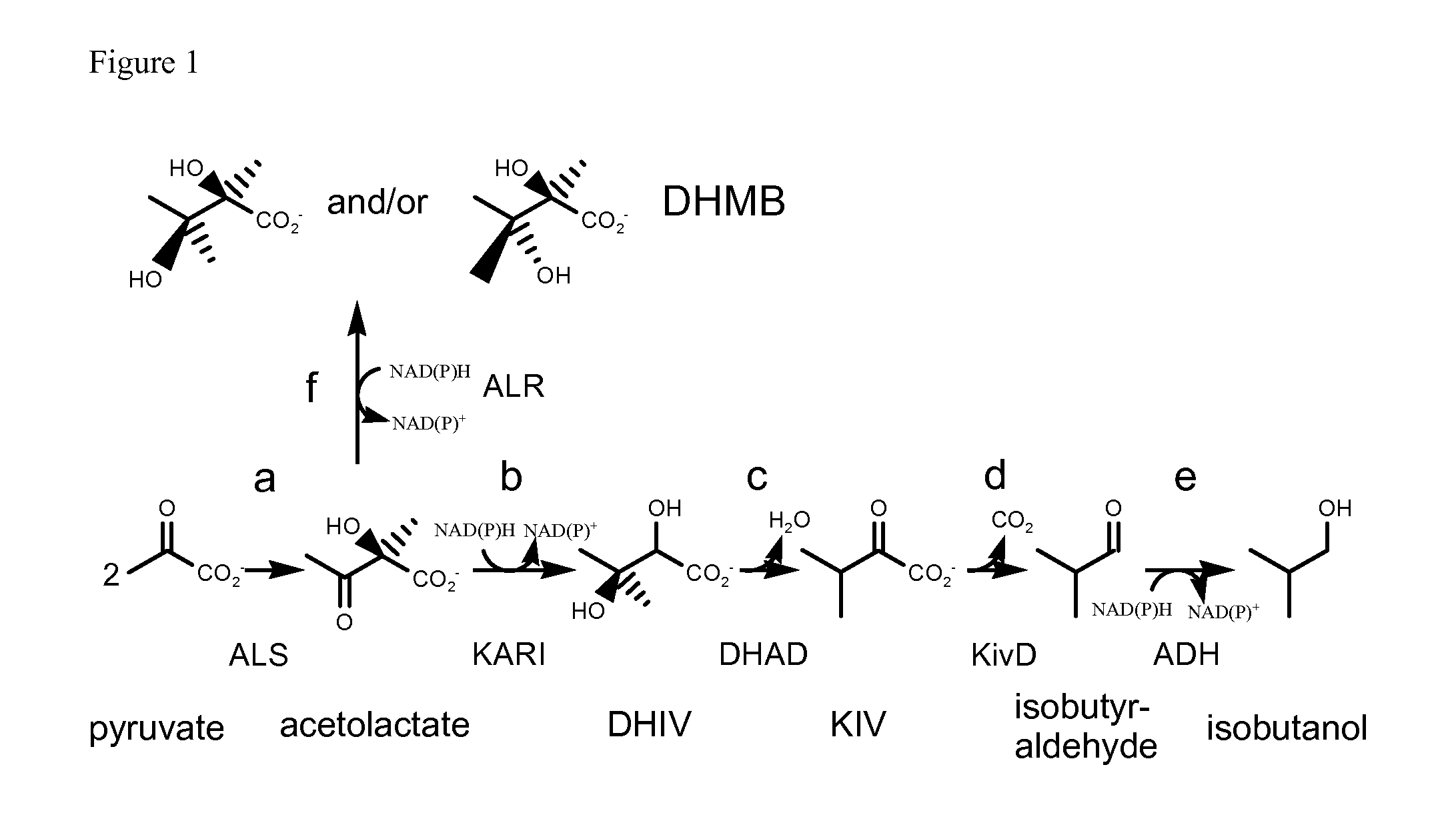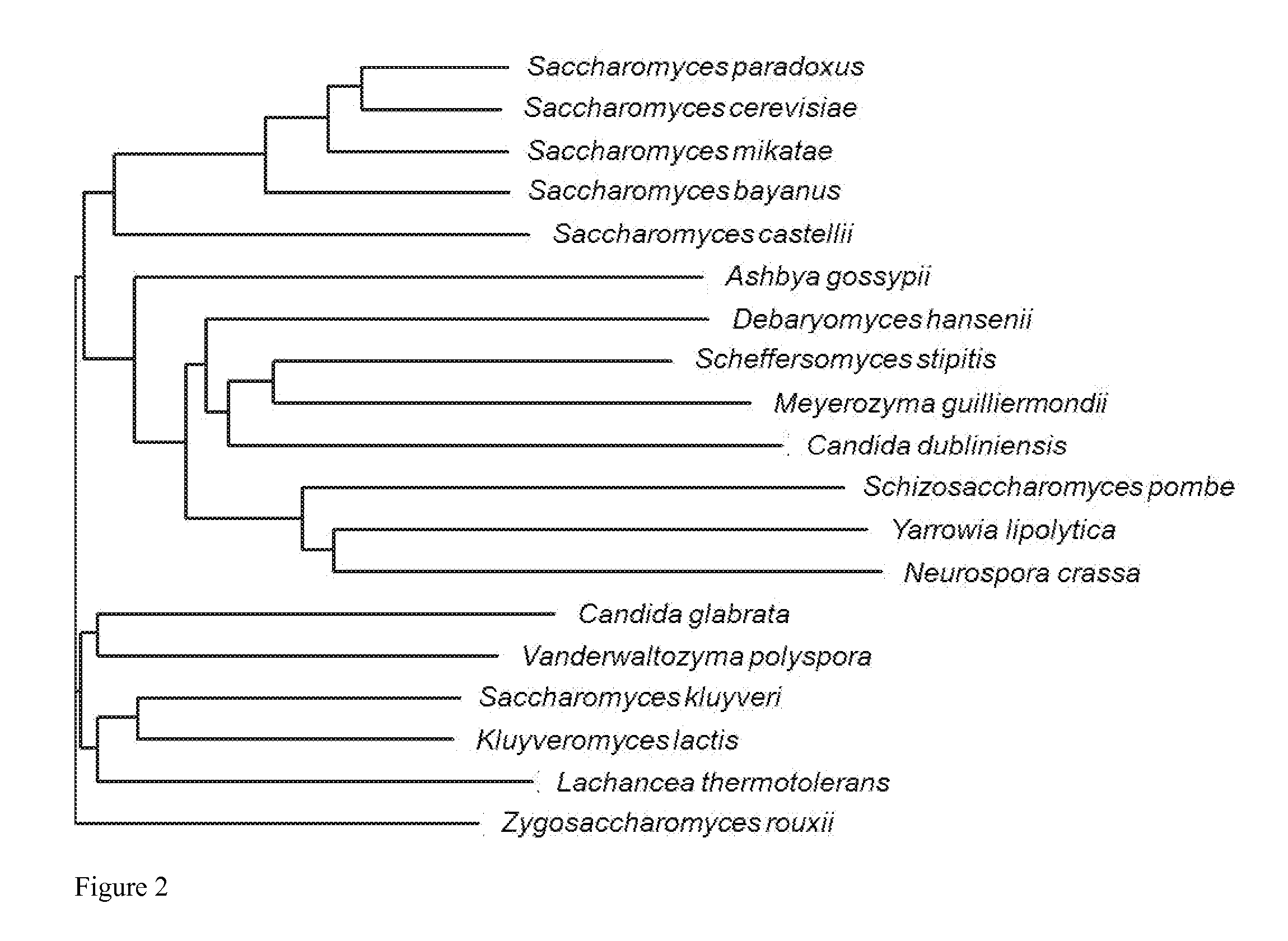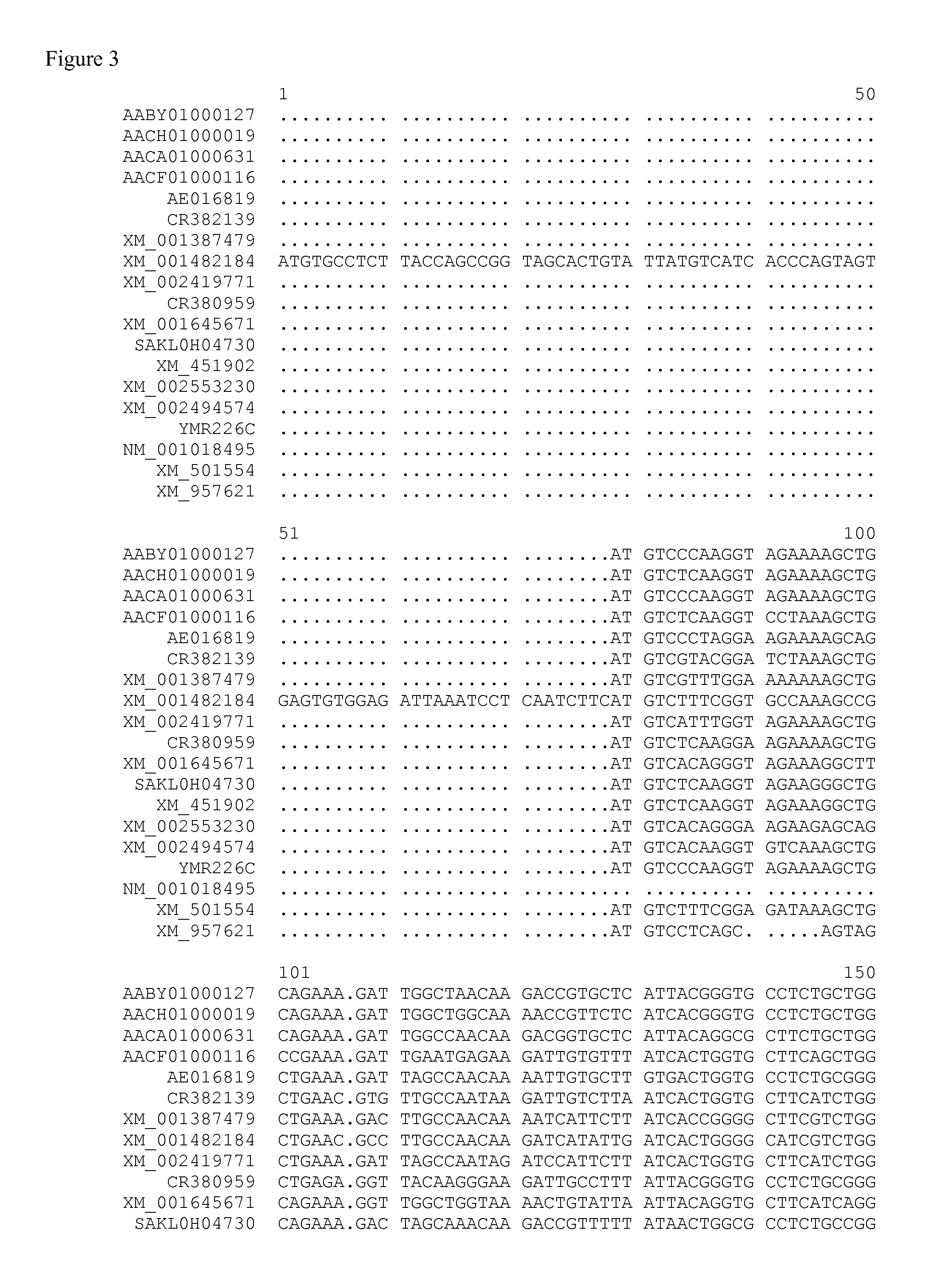Reduction of 2,3-dihydroxy-2-methyl butyrate (DHMB) in butanol production
a technology of 2,3-dihydroxy-2-methyl butyrate and butanol, which is applied in the field of industrial microbiology and butanol production, can solve the problem of reducing the overall production of butanol
- Summary
- Abstract
- Description
- Claims
- Application Information
AI Technical Summary
Benefits of technology
Problems solved by technology
Method used
Image
Examples
example 1
Identification of Genes that Encode Acetolactate Reductase (ALR) Activity Enzymes Using Yeast Knockout Library
[0210]From a knockout (“KO”) collection of >6000 yeast strains derived from the strain BY4743, available from Open Biosystems® (a division of Thermo Fisher Scientific, Waltham, Mass.), 95 candidate dehydrogenase gene knockout strains were chosen. Starter cultures of knockout strains were grown in 96-well deepwell plates (Costar 3960, Corning Inc., Corning N.Y., or similar) on rich medium YPD, and subcultured at a starting OD 600 nm of ˜0.3 in medium containing 0.67% Yeast Nitrogen Base, 0.1% casamino acids, 2% glucose, and 0.1 M K+-MES, pH 5.5. Samples were taken over a 5-day period for DHMB and DHIV measurements. DHIV and the two isomers of DHMB were separated and quantified by liquid chromatography-mass spectrometry (“LC / MS”) on a Waters (Milford, Mass.) AcquityTQD system, using an Atlantis T3 (part #186003539) column. The column was maintained at 30° C., and the flow rate...
example 2
Identification of Genes that Encode Acetolactase Reductase (ALR) Activity Enzymes Using Yeast Overeexpresion Library
[0213]From a “Yeast ORF” collection of >5000 transformants of Y258 each with a plasmid carrying a known yeast gene plus a C-terminal tag, under the control of an inducible promoter (Open Biosystems®, a division of Thermo Fisher Scientific, Waltham, Mass.), ninety-six strains with plasmids containing genes associated with dehydrogenase activity were grown in 96-well format by adaptation of the growth and induction protocol recommended by the vendor (Open Biosystems®). The cells were pelleted and permeabilized with toluene as described above, and a concentrated substrate mix was added to give final concentrations as in Example 1. Timed samples were taken and analyzed for DHIV and both isomers of DHMB. The ratios of the ALR / KARI were calculated and compared. Strains with elevated ratios were candidates for overproduction of ALR activities. When the data were displayed in ...
example 3
Construction of S. cerevisiae Strain PNY2211
[0214]PNY2211 was constructed in several steps from S. cerevisiae strain PNY1507 (Example 12) as described in the following paragraphs. First the strain was modified to contain a phosophoketolase gene. Next, an acetolactate synthase gene (alsS) was added to the strain, using an integration vector targeted to sequence adjacent to the phosphoketolase gene. Finally, homologous recombination was used to remove the phosphoketolase gene and integration vector sequences, resulting in a scarless insertion of alsS in the intergenic region between pdc1Δ::ilvD (described in Example 11) and the native TRX1 gene of chromosome XII. The resulting genotype of PNY2211 is MATa ura3Δ::loxP his3Δ pdc6Δ pdc1Δ::P[PDC1]-DHAD|ilvD_Sm-PDC1t-P[FBA1]-ALS|alsS_Bs-CYC1t pdc5Δ::P[PDC5]-ADH| sadB_Ax-PDC5t gpd2Δ::loxP fra2Δ adh1Δ::UAS(PGK1)P[FBA1]-kivD_L1(y)-ADH1t.
[0215]A phosphoketolase gene cassette was introduced into PNY1507 (Example 12) by homologous recombination. ...
PUM
| Property | Measurement | Unit |
|---|---|---|
| Molar density | aaaaa | aaaaa |
| Molar density | aaaaa | aaaaa |
| Substance count | aaaaa | aaaaa |
Abstract
Description
Claims
Application Information
 Login to View More
Login to View More - R&D
- Intellectual Property
- Life Sciences
- Materials
- Tech Scout
- Unparalleled Data Quality
- Higher Quality Content
- 60% Fewer Hallucinations
Browse by: Latest US Patents, China's latest patents, Technical Efficacy Thesaurus, Application Domain, Technology Topic, Popular Technical Reports.
© 2025 PatSnap. All rights reserved.Legal|Privacy policy|Modern Slavery Act Transparency Statement|Sitemap|About US| Contact US: help@patsnap.com



